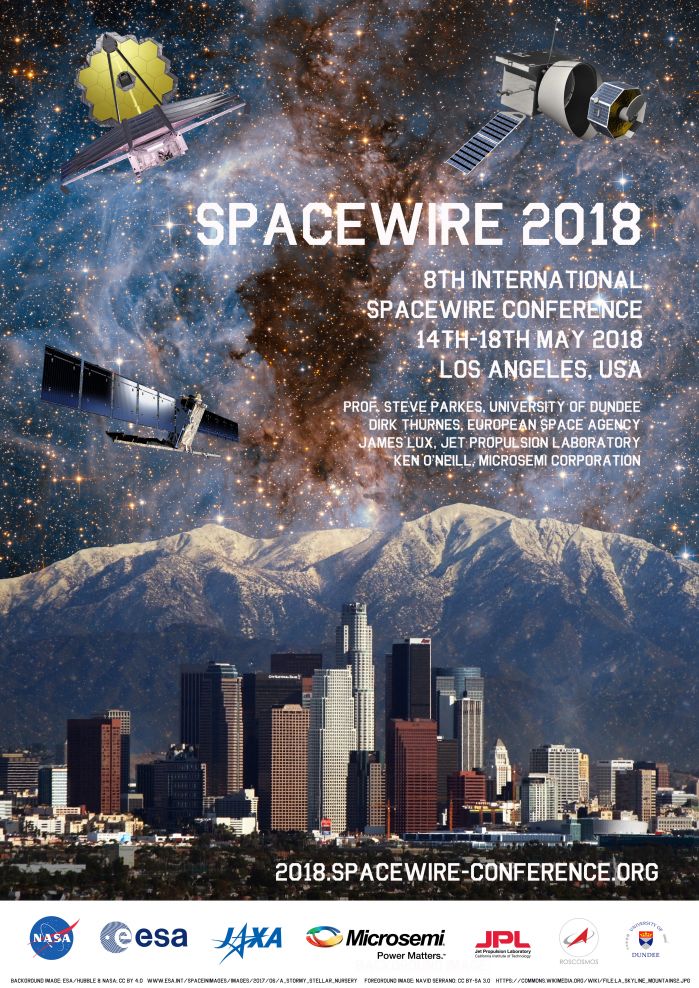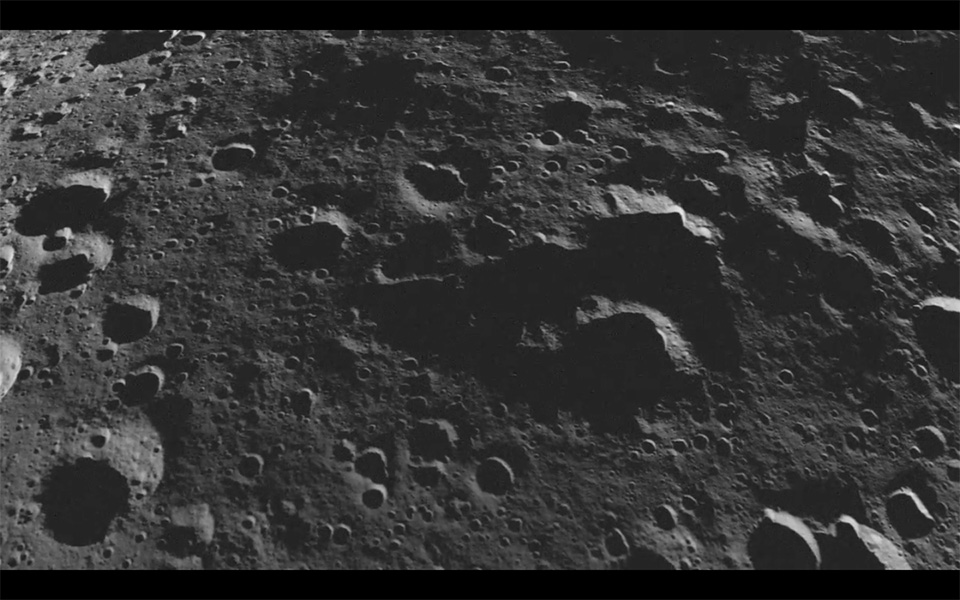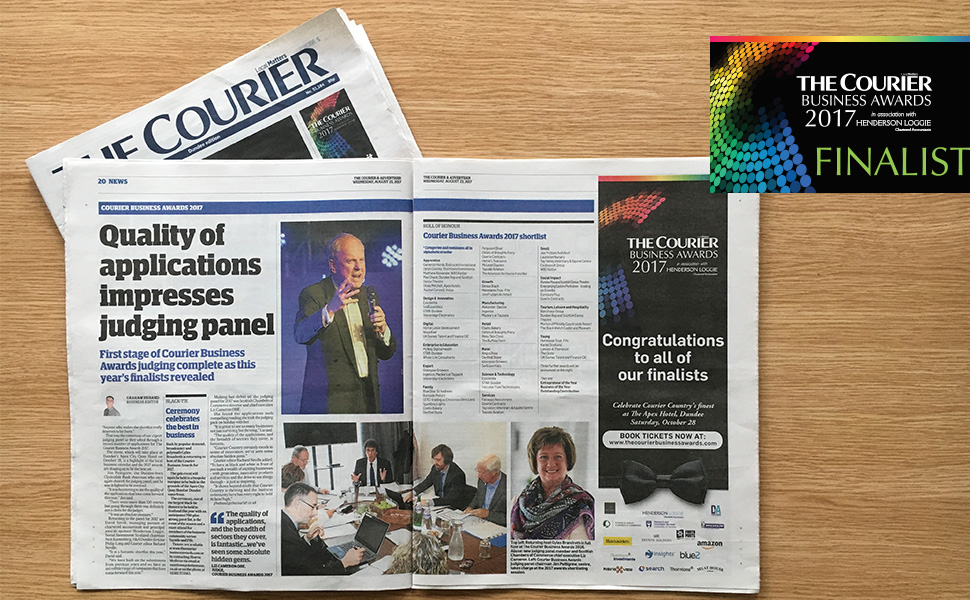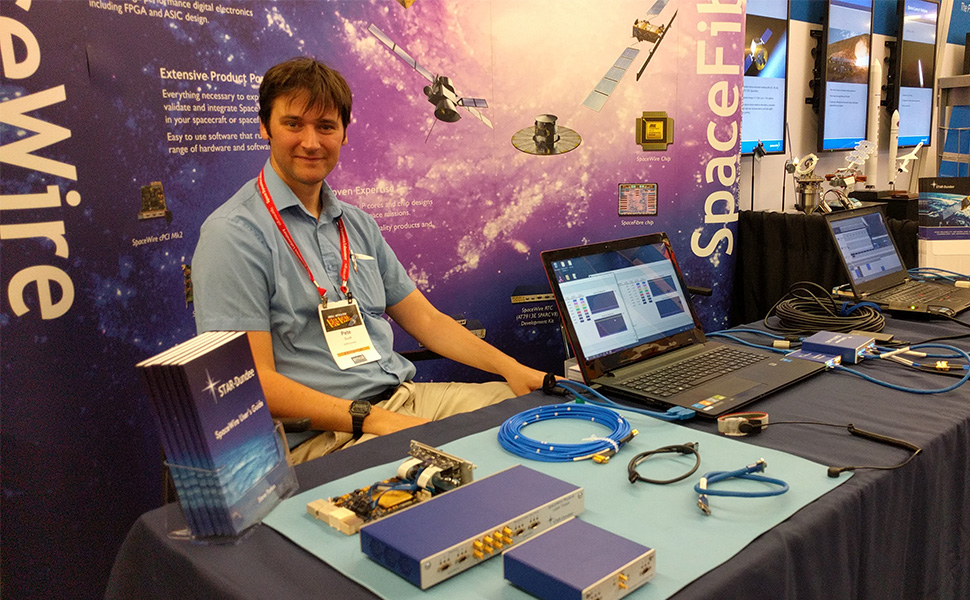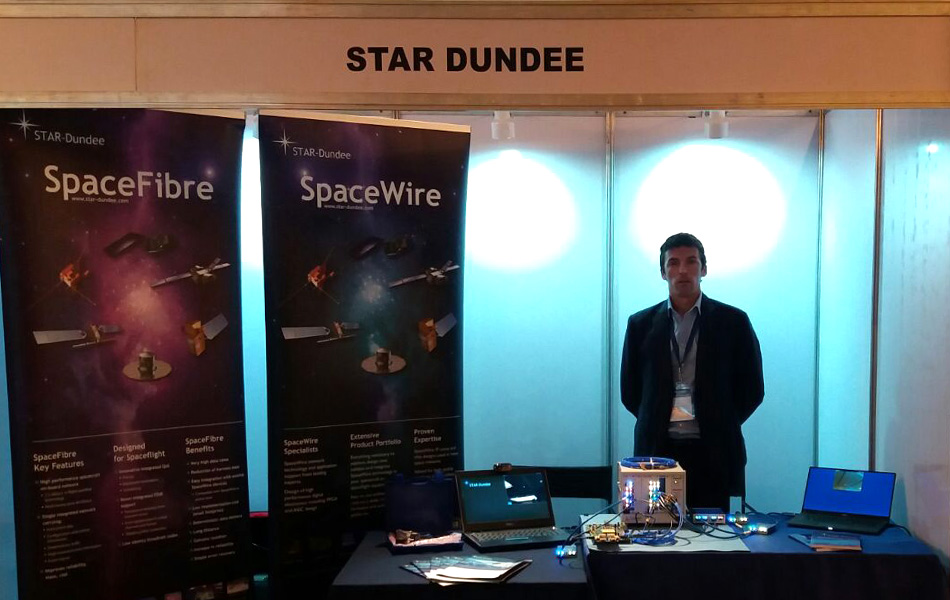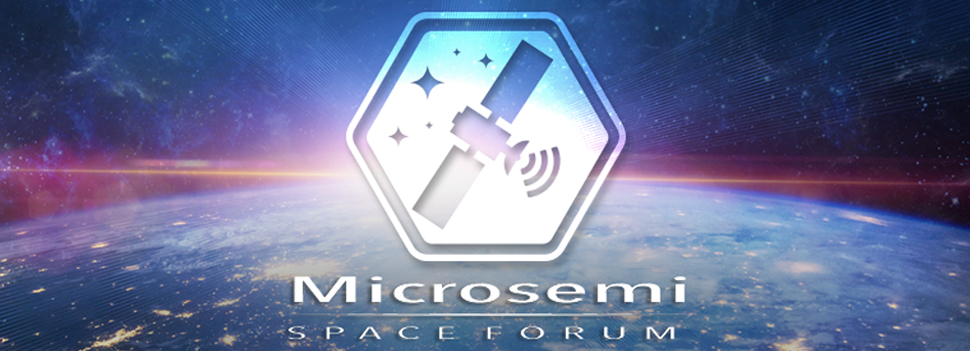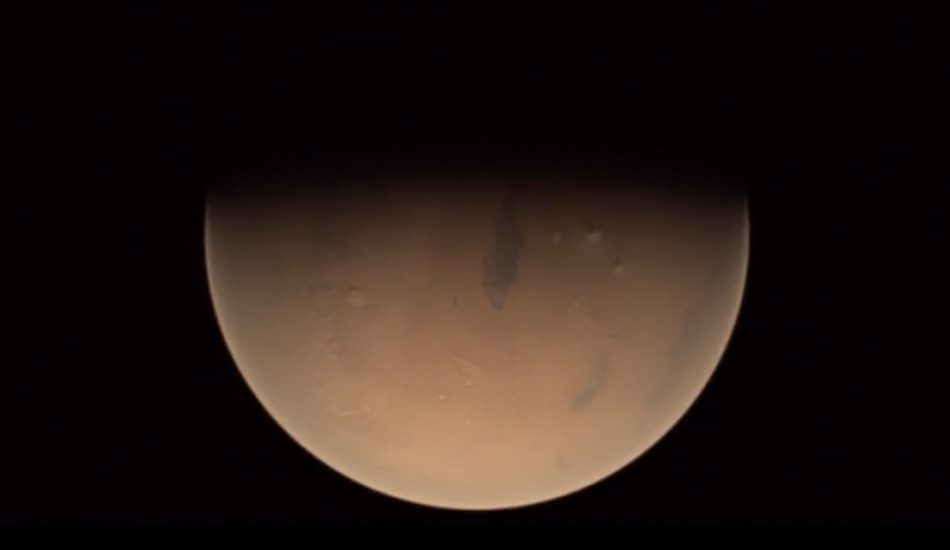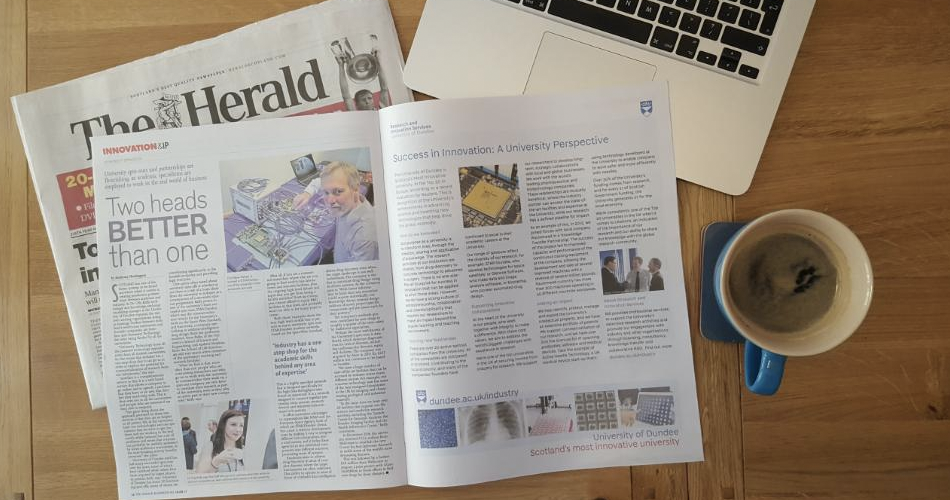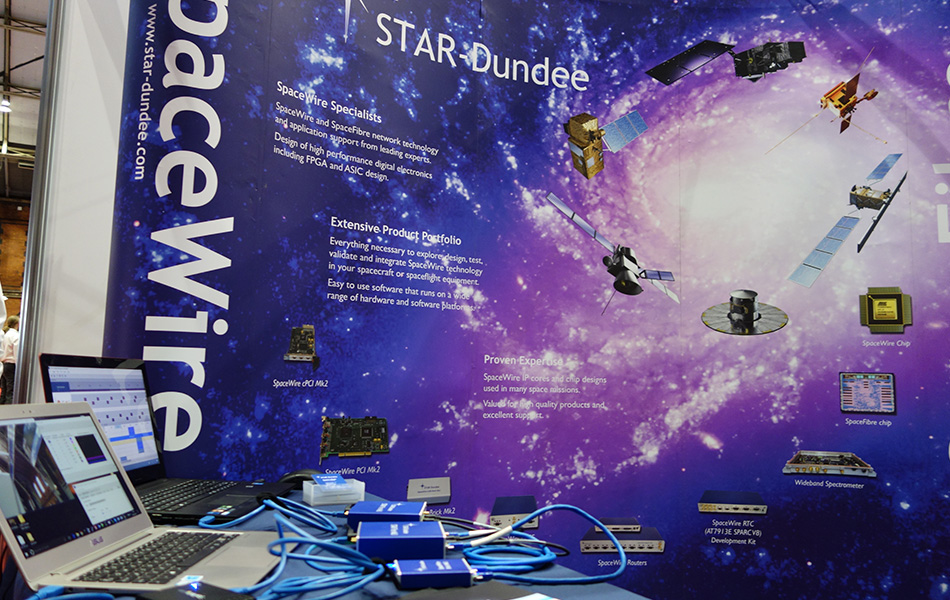
Images from left to right: STAR-Dundee employee-owners outside STAR House | Steve Parkes, former CEO, back in the lab as CTO with the new SpaceFibre equipment | Employee Ownership Association Proud to be a member badge |
Aerospace engineering company selects employee ownership to secure future and root business in Dundee
STAR-Dundee is now proudly employee owned and part of the Employee Ownership Association.
STAR-Dundee is an aerospace engineering company which designs electronic components and test equipment for spacecraft. Operating from a beautiful townhouse close to the University of Dundee from which the company spun out in 2002, STAR-Dundee provides the international space agencies and space industry with important equipment. Technology that originated in Dundee is now being used across the world on more than one hundred spacecraft which are monitoring the Earth, exploring nearby planets and asteroids, mapping our galaxy and sensing the further flung parts of our solar system. The ‘SpaceWire’ network technology interconnects sensors and electronic equipment onboard a spacecraft, providing an efficient and versatile means of integrating the equipment together. This is similar to the way in which USB connects peripheral devices to a laptop.
Originating primarily because several organisations wanted to use technology developed by the University of Dundee, STAR-Dundee has grown from an academic and a few enthusiastic research students, who initially worked in their spare time to design and develop the first products. The company now employs 25 people and has offices in both Dundee and Barcelona. STAR-Dundee focuses on what it is good at, the design of electronic equipment and related software, and sub-contracts appropriately skilled manufacturing partners in the UK.
After celebrating our fifteenth year in business this year, and to secure the long-term future for the company, STAR-Dundee was transformed from a company run and majority owned by the founding academic, Prof Steve Parkes, to an employee owned company. Facilitated by a succession planning project initiative by Scottish Enterprise, various options were considered for the company and it soon became clear that employee ownership was the way forward for a company like STAR-Dundee.
Prof Steve Parkes said: “Having formed STAR-Dundee and forged it over 15 years into a company with a worldwide reputation, I realised that I was not going to be around to see it through the next 15 years. It became clear that the future for the company was about the people in the company that had helped make it a success and the culture that we had developed to support that success. Selling the company to another organisation, which would inevitably change the culture and might even move it from its Dundee base, was not a very attractive idea. Employee ownership retains and strengthens the culture and will ensure that it always has a base in Dundee.”
Our management team has been restructured with former CEO Steve Parkes now focusing on technology development as Chief Technology Officer, and Stuart Mills, another company founder and previously Chief Operating Officer, becoming CEO. Carole Carrie, the Administration Manager, is now Company Secretary. These management changes are intended to provide a firm foundation for further growth of the company.
A new technology, SpaceFibre, is currently being launched by STAR-Dundee. Developed over the past ten years, SpaceFibre is designed for high-performance, high-availability applications. SpaceFibre is designed primarily for spacecraft applications, but is creating interest in the robotics, medical equipment and other industries where performance and availability are critical drivers.
Stuart Mills, STAR-Dundee’s new CEO, said: “STAR-Dundee has been a great success because of its people. Our move to employee ownership allows these individuals to have a greater say in the running of the company and to further benefit from the company’s success.”
Sarah Deas, director at Co-operative Development Scotland, the arm of Scottish Enterprise that supports company growth through collaborative and employee ownership business models, added: “STAR-Dundee’s main priorities when considering its succession options were to secure and strengthen the business, both in terms of its culture and success, and also to ensure the business remains rooted in Dundee. All of these objectives have been achieved through employee ownership as well as making sure the staff all have a meaningful stake in their company and its future success.”
Diane Taylor, Director of Research and Innovation Services at the University of Dundee, said: “STAR-Dundee is a prime example of innovation in University research making a real impact beyond academia. We would like to congratulate the whole STAR-Dundee team, and wish them every success for the future.”
If you would like a copy of our full press release about our transition to employee ownership to include on your website or in your publication please email: Lucy.Robertson@STAR-Dundee.com

